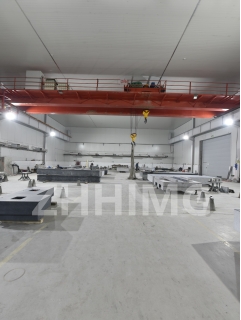Semiconductor devices are crucial to modern technology, powering everything from smartphones and computers to the specialized equipment used in healthcare and scientific research. Granite is an important component in semiconductor devices because of its unique properties, which make it an ideal material for use in the manufacturing process. In this article, we will explore the steps that granite components in semiconductor devices need to go through in the manufacturing process.
Step #1: Quarrying
The first step in the manufacturing process is to extract the granite from a quarry. Granite is a natural stone material that is found in abundance in many parts of the world. The process of quarrying involves using heavy equipment to cut blocks of granite from the earth. The blocks are typically several meters in size and weigh hundreds of tons.
Step #2: Cutting and Shaping
Once the blocks of granite have been extracted from the quarry, they are transported to a manufacturing facility where they are cut and shaped into the components needed for semiconductor devices. This involves using specialized cutting and shaping equipment to carve the granite into the desired shape and size. The precision of this step is critical, as even minor variations in the dimensions or shape of the components can cause problems during the manufacturing process.
Step #3: Polishing
After the granite components have been cut and shaped, they are polished to provide a smooth surface for use in the manufacturing process. This step involves using abrasive materials and various polishing techniques to create a mirror-like finish on the surface of the granite. The polishing process is crucial to ensure that the granite components are free of defects and have the uniform surface finish needed for use in semiconductor devices.
Step #4: Cleaning and Inspection
Once the granite components have been polished, they are thoroughly cleaned and inspected to ensure that they meet the strict quality standards necessary for use in semiconductor devices. This involves using high-tech equipment to detect any defects or imperfections in the surface of the granite. If any defects are detected, the components are rejected and must be reworked or replaced.
Step #5: Integration
Finally, the granite components are integrated into the semiconductor devices themselves. This involves using specialized equipment to assemble the various components of the device, including the circuit board, control unit, and power supply. The granite components are placed into the device at precise locations and orientations, and then secured in place using adhesives or other materials.
In conclusion, the use of granite components in semiconductor devices is a critical part of the manufacturing process. The unique properties of granite make it an ideal material for use in high-tech applications where precision and reliability are essential. By following the steps outlined above, manufacturers can produce high-quality semiconductor devices that power the technological innovations of today and shape the future of tomorrow.
Post time: Apr-08-2024

